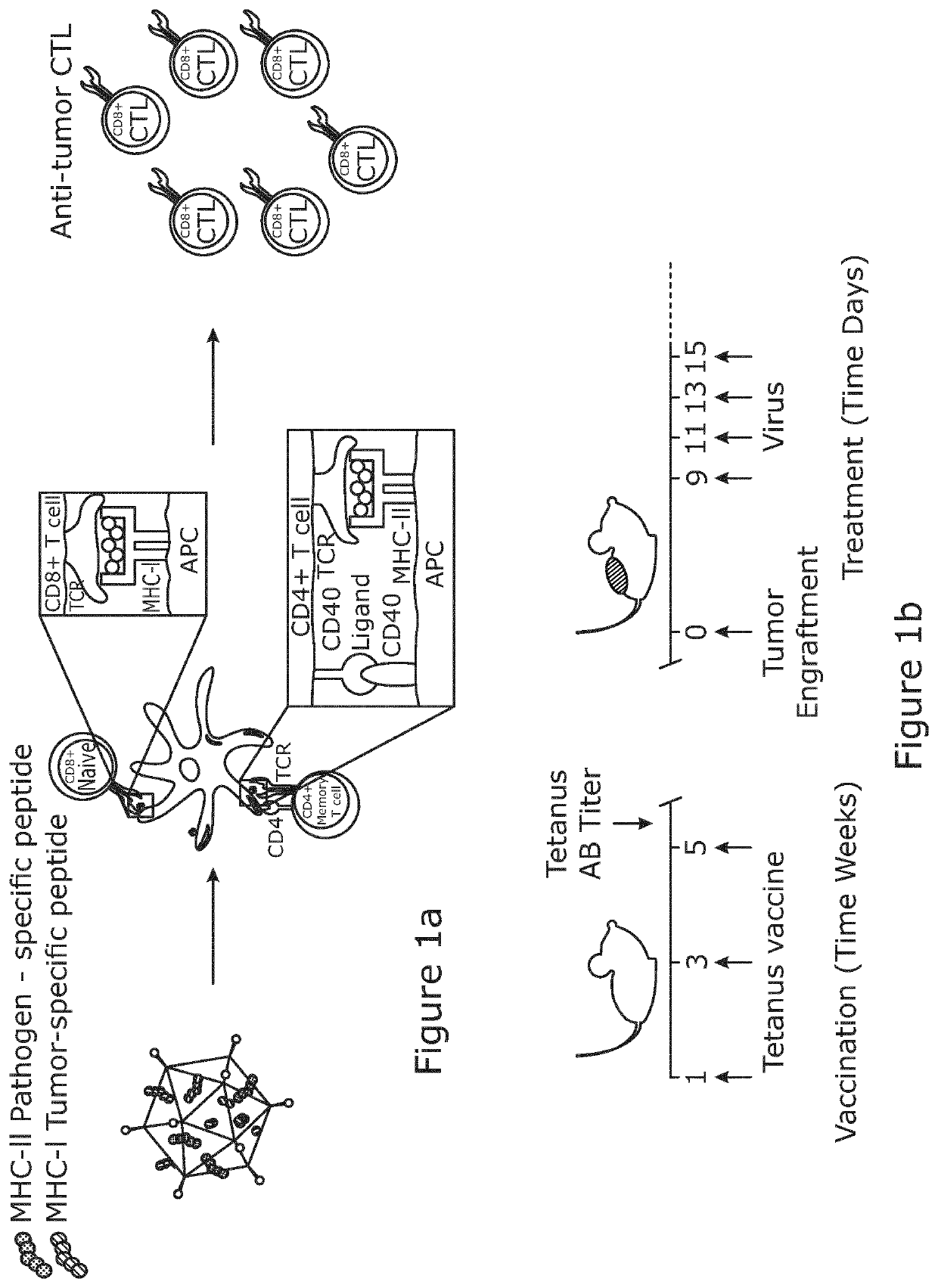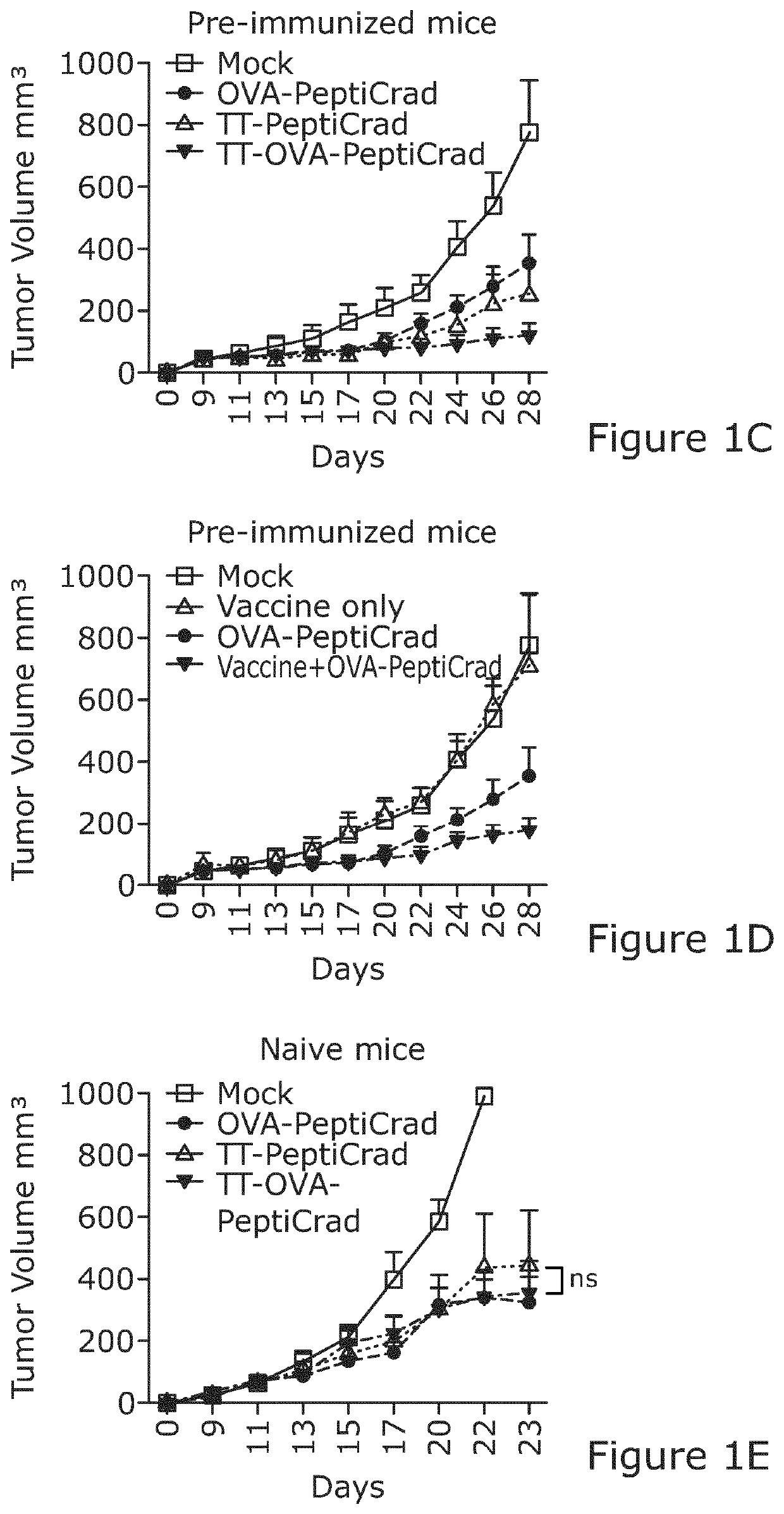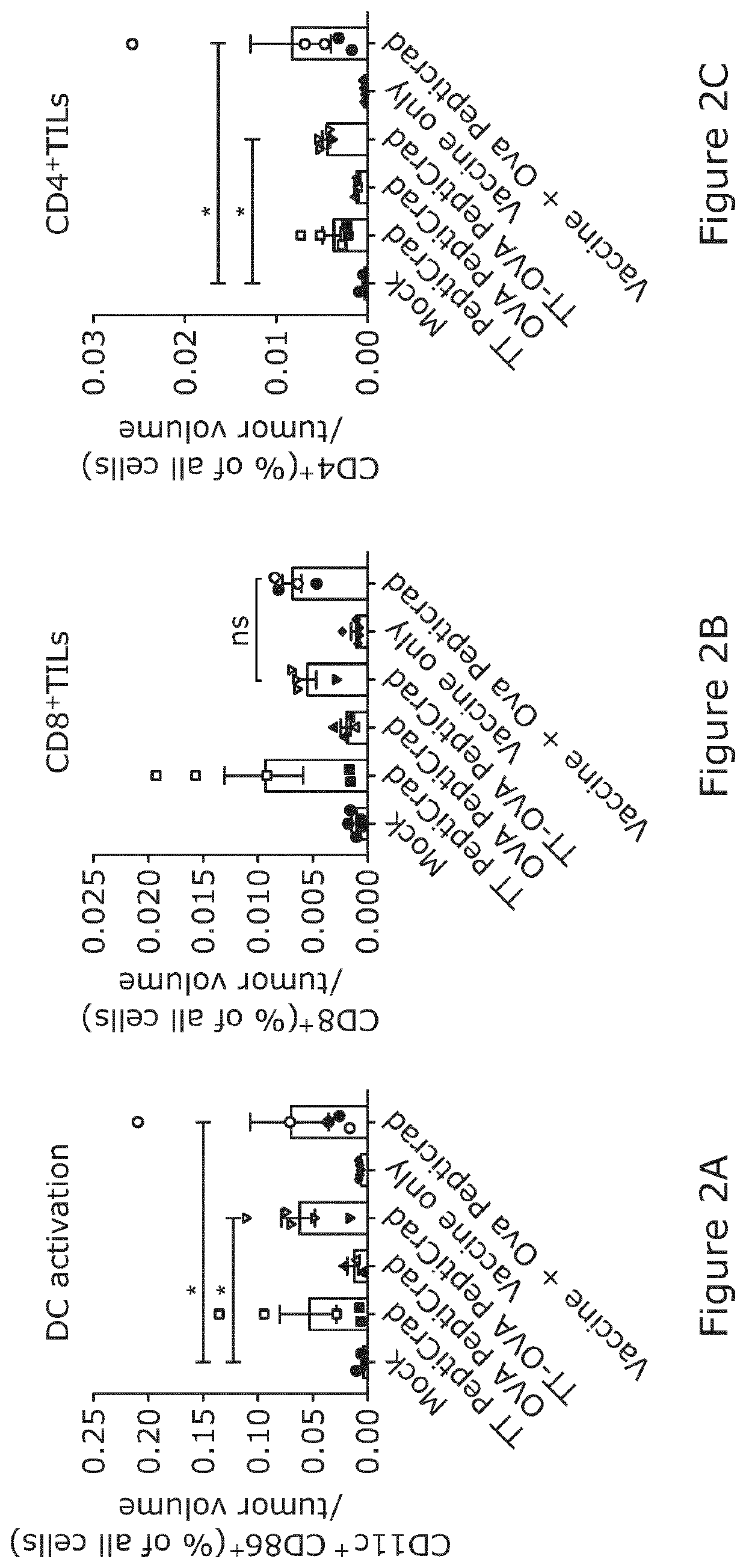Viral vector
a viral vector and virus technology, applied in the field of viral vectors, can solve the problems of incomplete tumor rejection loss in murine tumor models, and have not been elucidated how to optimally utilize the interplay between cd4+ and cd8+ t cell populations in cancer treatment strategies
- Summary
- Abstract
- Description
- Claims
- Application Information
AI Technical Summary
Benefits of technology
Problems solved by technology
Method used
Image
Examples
example 2
The Tetanus-Specific Memory Response Favourably Shapes the Immune Environment at the Tumor Site (TME)
[0083]In order to gain a deeper understanding of the mode of action of the double-coated PeptiCRAd, we investigated the quality of the immune response elicited by the different treatments. To this end, we analyzed the frequency of different cell populations in the tumor by flow cytometry, most importantly the activated dendritic cells (DC), CD4+ and CD8+ T cells with effector and memory phenotype and experienced and exhausted CD8+ effector T cells.
[0084]Interestingly, we found an increased frequency of activated intratumoral DCs in all of the groups that had been treated with PeptiCRAd in the context of tetanus antigens (either coated with the TT peptide or co-injected with the whole vaccine) (FIG. 2A). In contrast to these combination treatments, the use of vaccine alone led to poor induction of DC maturation in the TME, suggesting that inclusion of an adenoviral adjuvant may be cri...
example 3
CD40L Expressing TT-Specific, Th1 Polarized CD4+ T Cells are Detected in Secondary Lymphoid Organs Following TT-OVA-PeptiCRAd Therapy
[0086]To dissect the possible mechanism of the observed therapeutic efficacy, we assessed levels and phenotype of immune cells in secondary lymphoid organs of pre-immunized mice. As expected, PeptiCRAd treated mice showed expansion of CD4+ T cell compartment both in the spleen and in the draining lymph nodes (FIG. 3A and FIG. 8C). More importantly, a significant increase of TT-specific CD4+ T cells expressing CD40 ligand (CD40L) was observed in TT-OVA treated mice (FIG. 3B). The majority of these CD40L+ cells were polarized towards Th1 phenotype, albeit some TT-specific Foxp3+ T regulatory cells (Tregs) were also detected (FIG. 8A-B). Analysis of dLNs revealed that the intratumoral vaccination with TT-OVA-PeptiCRAd induced mainly IFN-gamma producing Th1 memory cells at the expense of IL-4 secreting Th2 cells, whereas no differences was observed in IL-1...
example 4
Combination with Immune Checkpoint Inhibitors Increases the Number of Responders and Leads to Complete Tumor Rejection
[0087]We have previously shown that a combination of tumor-targeted PeptiCRAd with immune checkpoint inhibitors is synergistic in terms of improved anti-tumor efficacy (8). Thus, we wanted to assess whether the vaccine-induced pre-existing immunity would further enhance this synergy, particularly by increasing the frequency of mice responding to the therapy.
[0088]In order to test this hypothesis, we coated the virus with TT and tyrosinase related protein 2 (TRP2) peptides (TRP2180-188 (23)), which is naturally occurring melanoma-associated antigen and hence more clinically relevant epitope than OVA. Tetanus toxoid pre-immunized mice were implanted with subcutaneous tumors and treated intratumorally with a PeptiCRAd coated with TRP2 peptides only (TRP2-PeptiCRAd) or with a PeptiCRAd coated with both TRP2 and TT peptides (TT-TRP2-PeptiCRAd) (FIG. 4A). Similarly, as in ...
PUM
| Property | Measurement | Unit |
|---|---|---|
| Fraction | aaaaa | aaaaa |
| Therapeutic | aaaaa | aaaaa |
| Immunogenicity | aaaaa | aaaaa |
Abstract
Description
Claims
Application Information
 Login to View More
Login to View More - R&D
- Intellectual Property
- Life Sciences
- Materials
- Tech Scout
- Unparalleled Data Quality
- Higher Quality Content
- 60% Fewer Hallucinations
Browse by: Latest US Patents, China's latest patents, Technical Efficacy Thesaurus, Application Domain, Technology Topic, Popular Technical Reports.
© 2025 PatSnap. All rights reserved.Legal|Privacy policy|Modern Slavery Act Transparency Statement|Sitemap|About US| Contact US: help@patsnap.com



